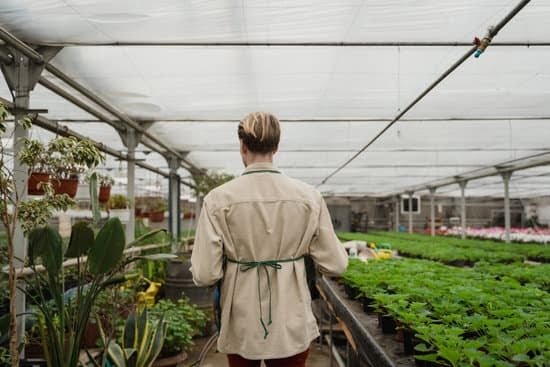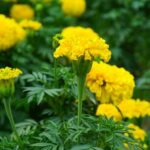Are you looking for gardening in pots ideas to liven up your outdoor or indoor space? Container gardening is a versatile and convenient way to cultivate plants in limited spaces, and it offers a range of benefits for plant enthusiasts. In this article, we will explore the numerous advantages of gardening in pots and provide valuable insights on how to create a successful pot garden.
Gardening in pots offers a myriad of benefits, including flexibility, portability, and space-saving convenience. Whether you have a small balcony, patio, or limited outdoor area, container gardening allows you to experience the joys of cultivating plants without the need for a traditional garden bed. From colorful flowers and fresh herbs to delicious vegetables, the possibilities for pot gardening are endless.
In addition to discussing the advantages of pot gardening, we will also delve into important considerations such as choosing the right containers, selecting suitable plants for container gardening, essential tools and supplies needed for success, maximizing space in small areas, maintenance and care tips, creative pot arrangements, troubleshooting common issues, and ultimately enjoying the fruits of your pot gardening labor.
Get ready to unleash your creativity and green thumb as we embark on an exciting journey into the world of gardening in pots.
Choosing the Right Containers
When it comes to gardening in pots, choosing the right containers is crucial for the success of your plants. The size, material, and drainage of your pots can greatly impact the health and growth of your plants. When selecting the size of your containers, consider the mature size of the plants you intend to grow. Larger plants will need bigger pots to accommodate their root systems, while smaller plants can thrive in more compact containers.
The material of your pots is also important. Clay or terracotta pots are great for plants that prefer well-draining soil and drier conditions, as they allow for air circulation through the pot walls. On the other hand, plastic or resin containers are lightweight and retain moisture better, making them suitable for plants that require more frequent watering.
Proper drainage is essential for container gardening. Without it, excess water can accumulate in the soil, leading to root rot and other issues. Ensure that your pots have drainage holes at the bottom to allow excess water to escape. You can also place a layer of rocks or pebbles at the bottom of the pot to improve drainage.
| Container Material | Characteristics |
|---|---|
| Clay/Terracotta | Allows for air circulation; good for well-draining soil |
| Plastic/Resin | Lightweight; retains moisture better |
By carefully considering these factors when choosing containers for your pot gardening endeavors, you can set yourself up for a successful and thriving garden.
Remember to keep this information in mind: when selecting pots be sure to take into consideration size, material and drainage to ensure a successful garden.
Selecting the Perfect Plants for Container Gardening
When it comes to gardening in pots, the options for plants are truly endless. Whether you want to grow colorful flowers, aromatic herbs, or fresh vegetables, there are plenty of options that thrive in container gardens. Here are some ideas and tips for selecting the perfect plants for your pot gardening adventure.
Flowers
When it comes to adding a pop of color and beauty to your outdoor or indoor space, flowers are the way to go. Annuals such as petunias, marigolds, and pansies are great choices for pots as they bloom continuously throughout the season. For a more permanent option, consider perennial flowers like lavender, phlox, or daisies that will come back year after year.
Herbs
Herbs are not only practical for cooking but also add fragrance and texture to your garden. Some popular herbs that do well in containers include basil, rosemary, thyme, and mint. These versatile plants can be grown together in a single pot or separately depending on their individual needs.
Vegetables
Believe it or not, many vegetables can thrive in pots if given the right conditions. Tomatoes, peppers, lettuce, and radishes are just a few examples of vegetables that can be successfully grown in containers. When choosing vegetables for your pot garden, make sure to select varieties that are suitable for small spaces and don’t require extensive root systems.
By carefully selecting the right combination of plants for your container garden, you can create a beautiful and bountiful oasis no matter how much space you have available. Whether you opt for vibrant flowers, flavorful herbs, or homegrown vegetables, there’s no limit to the possibilities when it comes to gardening in pots ideas.
Essential Tools and Supplies for Successful Pot Gardening
When it comes to pot gardening, having the right tools and supplies is essential for success. One of the most important things to consider is the type of containers you will be using. Make sure to choose pots that are the appropriate size for the plants you want to grow, made from durable materials such as terracotta or plastic, and have adequate drainage holes to prevent waterlogging.
In addition to containers, you will also need high-quality potting mix specifically designed for container gardening. This type of soil has good drainage properties and should be free from pests and diseases. It is also a good idea to have a trowel, hand rake, watering can or hose with a gentle spray attachment, and fertilizer suitable for potted plants on hand.
For those looking to delve into more advanced pot gardening ideas, consider investing in self-watering containers or a drip irrigation system to help maintain consistent moisture levels in your pots. Gardeners with limited outdoor space may benefit from vertical or hanging planters which can create beautiful visual displays while maximizing available space.
Finally, don’t forget about protective gear such as gloves and knee pads which can make pot gardening more comfortable and enjoyable. These essential tools and supplies will set you up for success in your container gardening endeavors.
| Tools | Supplies |
|---|---|
| Containers (pots) | Potting mix |
| Trowel | Watering can/hose |
| Fertilizer | Protective gear (gloves, knee pads) |
Remember these helpful lists while choosing essential tools and supplies for successful pot gardening.
Tips for Maximizing Space in Small Outdoor or Indoor Areas
Vertical Gardening
When space is limited, one of the best gardening in pots ideas is to utilize vertical space. This can be achieved by using hanging pots, wall-mounted planters, or stacking containers on shelving units. Vertical gardening not only maximizes space but also adds visual interest to your outdoor or indoor area. Additionally, it allows you to grow a greater variety of plants without taking up valuable floor space.
Utilize Multilevel Plant Stands
Multilevel plant stands are a great solution for small spaces as they allow you to display multiple pots at different heights. This not only creates an attractive and lush display but also helps maximize the use of available space. Whether indoors or outdoors, multilevel plant stands provide an opportunity to create a mini garden oasis in even the smallest of areas.
Hanging Herb Garden
For those interested in growing their own herbs but lack the space for a traditional garden, consider creating a hanging herb garden. By using hanging pots or a tiered planter stand, you can grow a variety of herbs in a compact and vertical manner. This not only maximizes space but also brings the convenience of fresh herbs right into your kitchen or outdoor living area.
By employing these tips for maximizing space in small outdoor or indoor areas, you can enjoy the benefits of pot gardening even with limited space. Whether it’s utilizing vertical gardening techniques, multilevel plant stands, or creating a hanging herb garden, there are numerous creative solutions to make the most of your available space when it comes to pot gardening.
Maintenance and Care
Proper maintenance and care are essential for the success of your pot gardening venture. When it comes to gardening in pots, ideas for watering, fertilizing, and repotting are crucial aspects to consider to ensure that your plants thrive in their confined environment.
Watering is a critical task in pot gardening, as the confined space of a container means that plants can quickly dry out. One idea for efficient watering is to use a drip irrigation system or self-watering containers to provide a consistent water supply to your plants. Additionally, regularly checking the moisture level of the soil and adjusting your watering schedule accordingly can prevent overwatering or underwatering, both of which can be detrimental to plant health.
In terms of fertilizing, potted plants require regular feeding due to the limited nutrients available in the confined space. Ideas for effective fertilizing include using slow-release fertilizer pellets or liquid fertilizer according to the specific needs of your plants. Incorporating organic matter such as compost into the potting mix can also provide essential nutrients for healthy growth.
As your plants grow, repotting may become necessary to prevent overcrowding and allow for sufficient root development. When considering ideas for repotting, choose a container that is one size larger than the current one and ensure it has adequate drainage holes. Gently loosen the roots before transferring the plant to its new container with fresh potting mix to support continued growth.
By implementing these ideas for maintenance and care in your pot gardening routine, you can effectively nurture your plants and enjoy bountiful harvests of flowers, herbs, or vegetables within a limited space.
Creative and Stylish Pot Arrangements for a Stunning Visual Impact
When it comes to gardening in pots, the creative and stylish arrangement of your containers can have a stunning visual impact on your outdoor or indoor space. Whether you have a small balcony, patio, or even just a windowsill, there are endless possibilities for creating beautiful arrangements that not only look great but also thrive in their environment.
Here are some ideas for creative and stylish pot arrangements to elevate the visual appeal of your container garden:
- Vertical Garden: Utilize vertical space by arranging pots on shelves, hanging them from hooks, or using a trellis for climbing plants like ivy, jasmine, or even cherry tomatoes.
- Color-Coordinated Planters: Create a cohesive look by grouping together pots with similar color schemes or choosing plants with complementary flowers and foliage.
- Thriller-Filler-Spiller Technique: This classic arrangement technique involves placing a “thriller” plant (tall and eye-catching), “filler” plants (medium height and bushy), and “spiller” plants (trailing or cascading) in the same container for an interesting dynamic.
In addition to these ideas, you can also explore different pot shapes and sizes to add visual interest, mix and match textures and materials for a more eclectic look, or play with asymmetrical arrangements for an artistic touch. Get creative with your pot gardening to make a statement in any space while enjoying the beauty of nature.
Troubleshooting Common Issues
When it comes to gardening in pots, dealing with pests, diseases, and environmental challenges is a common issue that many gardeners face. However, with the right knowledge and tools, these challenges can be managed effectively to ensure the health and success of your container garden.
One of the most important steps in preventing pest infestations and diseases in your potted plants is to choose high-quality, disease-resistant plants from the start. By selecting healthy seedlings or young plants from reputable nurseries or garden centers, you can reduce the risk of introducing pests and diseases into your container garden.
Additionally, regularly inspecting your plants for any signs of trouble such as wilting leaves, discoloration, or unusual spots can help you catch problems early on before they spread.
In addition to selecting the right plants, it’s also essential to provide proper care and maintenance for your container garden to prevent common issues. This includes ensuring that your plants are receiving adequate sunlight, water, and nutrients.
Overwatering or underwatering can lead to root rot or nutrient deficiencies, so it’s crucial to monitor the moisture levels in your potting soil and adjust your watering schedule accordingly. Fertilizing your potted plants with a balanced fertilizer at regular intervals can also help promote healthy growth and reduce the risk of nutrient-related issues.
Furthermore, environmental challenges such as extreme temperatures, harsh winds, or sudden changes in weather can impact the health of your container garden. To protect your potted plants from these challenges, consider moving them to a more sheltered location during extreme weather events or providing additional protection with plant covers or wind barriers.
By being proactive in addressing potential environmental threats, you can minimize their impact on your pot gardening efforts. Overall,taking these precautions will help ensure that you enjoy a thriving container garden filled with beautiful and productive plants all season long.
Conclusion
In conclusion, pot gardening offers a multitude of benefits and opportunities for both seasoned gardeners and beginners alike. The ability to cultivate beautiful flowers, fresh herbs, and delicious vegetables in limited spaces makes it an attractive option for those with minimal outdoor or indoor areas.
By carefully choosing the right containers, selecting the perfect plants, and implementing essential tools and supplies, individuals can create stunning pot arrangements for a visually impactful garden. Furthermore, with proper maintenance and care techniques such as watering, fertilizing, and repotting, the potential for a thriving pot garden is within reach.
For those facing common issues such as pests, diseases, or environmental challenges, troubleshooting strategies can be implemented to address these concerns effectively. By being proactive in identifying and rectifying potential problems early on, enthusiasts can maintain the health and vitality of their cherished pot gardens. Overall, with dedication and a bit of creativity, both small outdoor and indoor spaces can be transformed into flourishing havens through the art of gardening in pots.
As we revel in the joys of hand-growing our own flora or food in containers while working responsibly-the sublime experience proves to be immensely rewarding. Whether you’re drawn to the blossoming beauty of colorful blooms or desire to savor the delightfully fresh taste of homegrown produce-pot gardening opens up endless possibilities for transforming any space into a lush oasis.
Let’s embrace the artistry of container gardening by exploring inventive ideas that suit our individual preferences-enabling us to truly relish in the fruits of our labor.
Frequently Asked Questions
What Are Best Vegetables to Grow in Pots?
The best vegetables to grow in pots are those that don’t require a lot of space, such as tomatoes, peppers, lettuce, and herbs like basil and parsley. These plants can thrive in containers and still produce a good harvest.
How Do I Make My Container Garden Look Nice?
To make your container garden look nice, consider using a variety of different plants with varying heights, textures, and colors. Also, choose attractive containers that complement your outdoor space and consider adding decorative elements like trellises or stakes for climbing plants.
What Plant Grows Well in Pots?
Many plants grow well in pots, but some popular choices include compact varieties of fruits and vegetables like strawberries or dwarf citrus trees. Flowers like marigolds, petunias, and geraniums also thrive in pots and add a colorful touch to any garden setting.

Welcome to my gardening blog! I am passionate about plants and enjoy sharing my knowledge and experiences with others. In this blog, I will write about everything related to gardening, from tips on how to get started to updates on my own garden projects.





